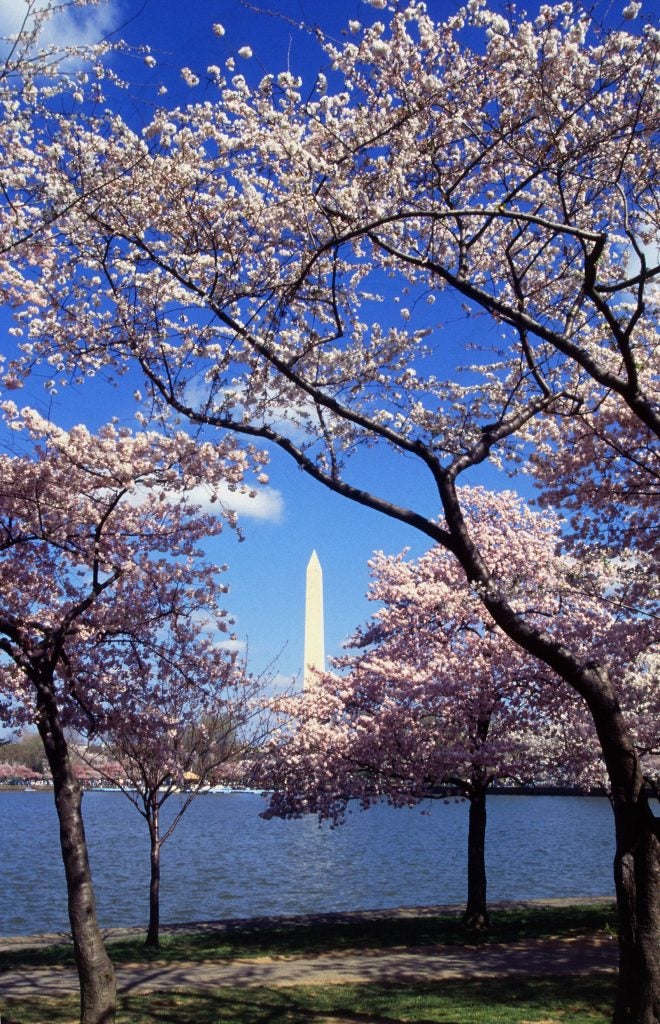Cherry blossoms: Predicting peak bloom in a warming world with weirder weather

Every March, Washington D.C. anxiously anticipates the arrival of the city’s world-famous cherry blossoms.
Millions of people flood the National Mall each year to observe the “peak bloom” – defined by the National Park Service as the day when 70 percent of the Yoshino cherry blossoms surrounding the Tidal Basin have opened.
Fluctuating weather patterns render predictions of peak bloom notoriously fickle. Experts consider it impossible to accurately estimate the cherry blossoms’ vibrant debut more than 10 days in advance. And 2018 was no exception with the peak bloom date predictions changing three times.
While bloom forecasting is a historically temperamental exercise, climate change is now further complicating matters.
As global average surface temperatures continue to rise, D.C. has felt the heat. Weather station measurements from the city have recorded a 1.6 degree Celsius per century increase in regional temperature – double the global average warming rate. The warmer winters associated with these increasing temperatures may help explain why between 1921 and 2016 peak bloom dates have shifted earlier by about five days.
A warming regional climate may influence seasonal trends, but blooms are still heavily affected by short term changes in the weather. While 2018 peak bloom was originally projected to occur between March 17th and 20th – early in the season due to the city’s exceptionally warm February – a major snowstorm and cold temperatures persisting through March delayed the arrival until April 5th.
It may initially seem that heavy snowstorms and colder temperatures are inconsistent with climate change. However, there is a growing body of evidence that shows how changes in atmospheric circulation patterns associated with rapid warming in the Arctic may actually be linked to these dramatic cold snaps in the mid-latitudes. Increased moisture in the atmosphere from a warming world also allows for heavier precipitation events, including snowfall.
These opposing consequences of climate change – hotter temperatures with intermittent cold snaps – make the bloom schedule of D.C.’s cherry blossoms even more complex. But one thing is clear: predictions will certainly not get any easier.












